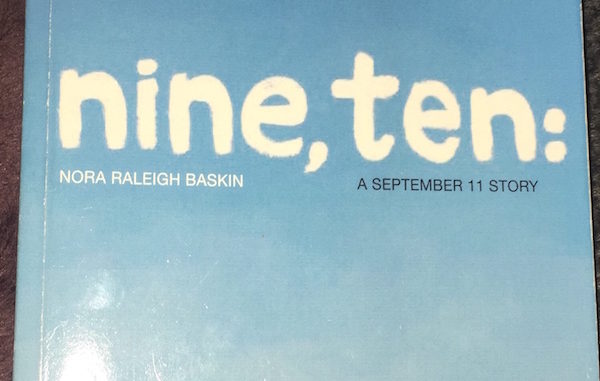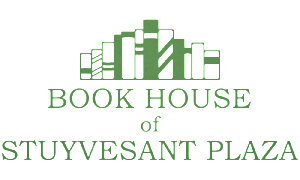
 As part of our ongoing collaboration with the Book House of Stuyvesant Plaza, our writers have accepted the challenge of reading and reviewing pre-publication review copies of highly anticipated young adult literature. The reviews are posted here for our readers, but also will be sent to the Book House where they will hopefully be used to inform customers about the books they may want to purchase.We will try to publish one review a week for the spring.
As part of our ongoing collaboration with the Book House of Stuyvesant Plaza, our writers have accepted the challenge of reading and reviewing pre-publication review copies of highly anticipated young adult literature. The reviews are posted here for our readers, but also will be sent to the Book House where they will hopefully be used to inform customers about the books they may want to purchase.We will try to publish one review a week for the spring.
The reviews contain spoilers, so be forewarned!
Nine, Ten: A September 11 Story
by Nora Raleigh Baskin
Published August 2016
208 pages, Simon and Schuster Children’s Publishing
Nora Raleigh Baskin has centered this book around a profound, broad and powerful topic and created a simple informative resource of a scarring American event, the terrorist attacks on the World Trade Center on September 11, 2001, for a younger generation to read and fully comprehend. This book is written for younger readers, generally grades three through seven. The ages of the characters in the book and the difficulty of language reflects the intended audience for this reading. The use of a third person narrative which narrates the lives and viewpoints of four completely different characters between the ages twelve and thirteen provide a wider understanding of the national crisis and its effects. It provides perspective from different religions, locations and life structures, creating a tool for a fuller comprehension of a non-fictional calamity.
As an eleventh grader in an Honors English class, this book was not a difficult read, as its intended audience was for a much younger age group. The simplistic language, avoidance of deep metaphorical meanings and symbolism created a more straight-forward kind of reading. There was no need to dig up hidden meanings, comprehend a larger vocabulary or understand and pick apart dramatic irony, as a majority of sixth graders are not that advanced when it comes to reading. This book was a perfect level of difficulty and simplicity for younger readers. I actually really admired this book because even though its intended audience was for a younger group of readers, Baskin still managed to portray prominent problems of the big, bad world that exists beyond sixth-grade drama. Although Baskin did incorporate pre-teen captivating sixth-grade drama, she addressed more complex and legitimate problems such as racism, death, discrimination against religion, poverty, divorce and the serious effect absence of a parent or parents has on a teenager. “It was just that lately Nadira felt that wearing her hijab was more like showing she was different from everyone else. She certainly didn’t need to explain it everywhere she went.” (50) Nadira is one of the four characters in this book that the plot revolves around. Nadira is a Muslim girl in sixth grade who is learning how to accept her religion as well as dealing with her peers judgements, questions, curiosity and assumptions. I know that when I was in sixth grade, I was not exposed to many of these problems, taking into account I grew up in a small village crossed between a rural and suburban environment, where you go to school with the same people you’ve known since you were in kindergarten. There is not much ethnic or racial diversity in my school either, proving my previous lack of exposure to these social judgements and problems. A small town tends to be in it’s own social bubble, unexposed to the real world. This book provides a pathway for readers, young and possibly “unexposed”, to wander down and help them grasp or acknowledge these kinds of social injustices and complications and their existence in real life. The way of writing for the intended younger audience created a simple stepping stone for understanding bigger and complex problems.
The use of a third person narrative of four interchanging characters provides a more diverse point of view for the reader. These four characters, Will, Sergio, Ammie and Nadira, share a similar link, which helps develop an interesting story line, but are also very different. They are all middle school students who deal with their own inner or external conflicts and all end up in the same location at the end of the book, the 9/11 Memorial. Yet they differ from each other. They all live in different places across the country with different economic statuses, religions and family relationships. For example, Sergio lives alone with his grandmother in New York City because of the death of his loving mother, and the irresponsibility and carelessness of his biological father. Sergio lacks a solid family environment and I think this is an important aspect that helps develop both his character and the plot. Nadira is an important character that also helps carry out the story. Baskin not only educates young readers on religion and common misunderstandings, but also displays the generalized racism and religious discrimination directed towards Muslims, especially after the terrorist attacks carried out by Islamic extremists. When Nadira and her family decide to attend the one-year memorial of the attacks, they are faced with a racist and uneducated man. “Well, we don’t want your kind here. Nobody does. Get out and take your A-rab wife and kids with you,” (183). Baskin is displaying actual perspectives of many people in this world and their harsh judgement, lack of knowledge and generalization of people of a certain religion and its practices and I really praise her for this aspect in her writing.
I think this book is a perfect reading level for the majority of late elementary and middle school students. The reading level is perfectly average for the majority, and it contains aspects of many books that would attract pre-teens; first day of school drama, middle school relationships and friendships. Many middle schoolers are going to be attracted to books that are centered around their interests or what is relatable to them. Being that age, they are probably not going to be picking up a book bluntly about social injustice and discrimination in America. Baskin ties in these important, more out-of-reach concepts, into a more suitable and familiar way of younger historical fiction.
Not to forget about the entire plot that the book leads up to and revolves around, the attacks on the World Trade Center, Baskin does a brilliant job of softly intertwining the harsh reality into a more gentle concept for young readers to grasp without taking away the profoundness of it all. “Because in the end it was just about people: mothers, fathers, friends, foes, sisters, brothers, children born and not yet born, sons and daughters, people from all over the United States and then all over the globe, whose lives would never be the same. Because the world changed that day, slowly and then all at once,” (174).
Baskin touches on a subject that shook this nation tremendously and carries its impact throughout the book in a way for younger kids to understand. This book provides a page-turning story line that captivates young readers as well as educate and subtly expose them to realistic and modern social conflicts as well as the traumatic attacks of September 11, 2001.
